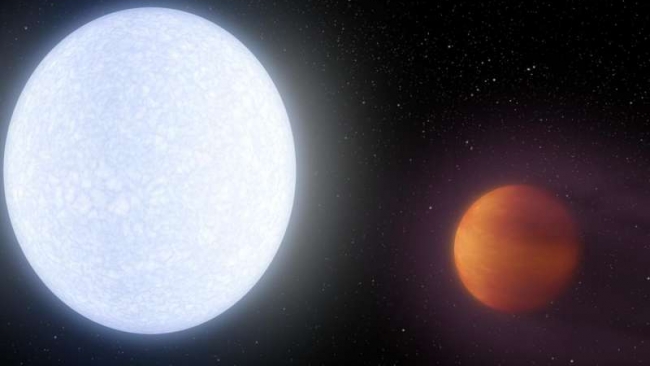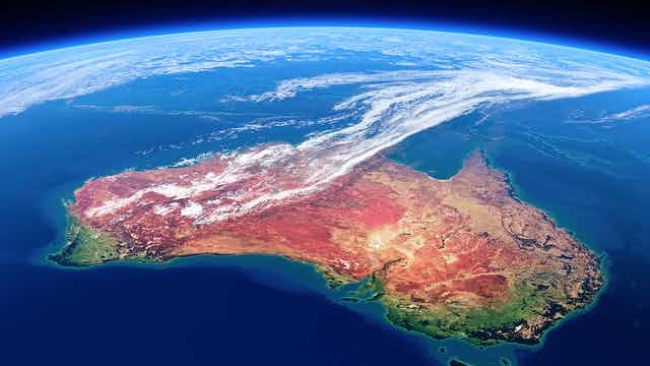Extreme exoplanet: Astronomers discover alien world hotter than most stars

Imagine a planet like Jupiter zipping around its host star every day and a half, superheated to temperatures hotter than most stars and sporting a giant, glowing gas tail like a comet.
That is what an international research team led by astronomers at Ohio State and Vanderbilt universities think they have found orbiting a massive star they have labeled KELT-9, located 650 light years from Earth in the constellation Cygnus.
The discovery is described this week in a paper titled "A giant planet undergoing extreme-ultraviolet irradiation by its hot massive-star host" published by the journal Nature and in a presentation at the spring meeting of American Astronomical Society in Austin, Texas.
With a day-side temperature peaking at 4,600 Kelvin (more than 7,800 degrees Fahrenheit), the newly discovered exoplanet, designated KELT-9b, is hotter than most stars and only 1,200 Kelvin (about 2,000 degrees Fahrenheit) cooler than our own sun. In fact, the ultraviolet radiation from the star it orbits is so brutal that the planet may be literally evaporating away under the intense glare, producing a glowing gas tail.
The super-heated planet has other unusual features as well. For instance, it's a gas giant 2.8 times more massive than Jupiter but only half as dense, because the extreme radiation from its host star has caused its atmosphere to puff up like a balloon.
Because it is tidally locked to its star—as the moon is to Earth—the day side of the planet is perpetually bombarded by stellar radiation and, as a result, it is so hot that molecules such as water, carbon dioxide and methane can't form there.
"It's a planet by any of the typical definitions based on mass, but its atmosphere is almost certainly unlike any other planet we've ever seen just because of the temperature of its day side," said Scott Gaudi, professor of astronomy at The Ohio State University and one of the lead authors of the study.
The reason the exoplanet is so hot is because the star it orbits is more than twice as large and nearly twice as hot as our sun. "KELT-9 radiates so much ultraviolet radiation that it may completely evaporate the planet. Or, if gas giant planets like KELT-9b possess solid rocky cores as some theories suggest, the planet may be boiled down to a barren rock, like Mercury," said Keivan Stassun, Stevenson Professor of Physics and Astronomy at Vanderbilt, who directed the study with Gaudi.
Source: Phys.org
Tue 6 Jun 2017 at 08:26




.png)
.png)